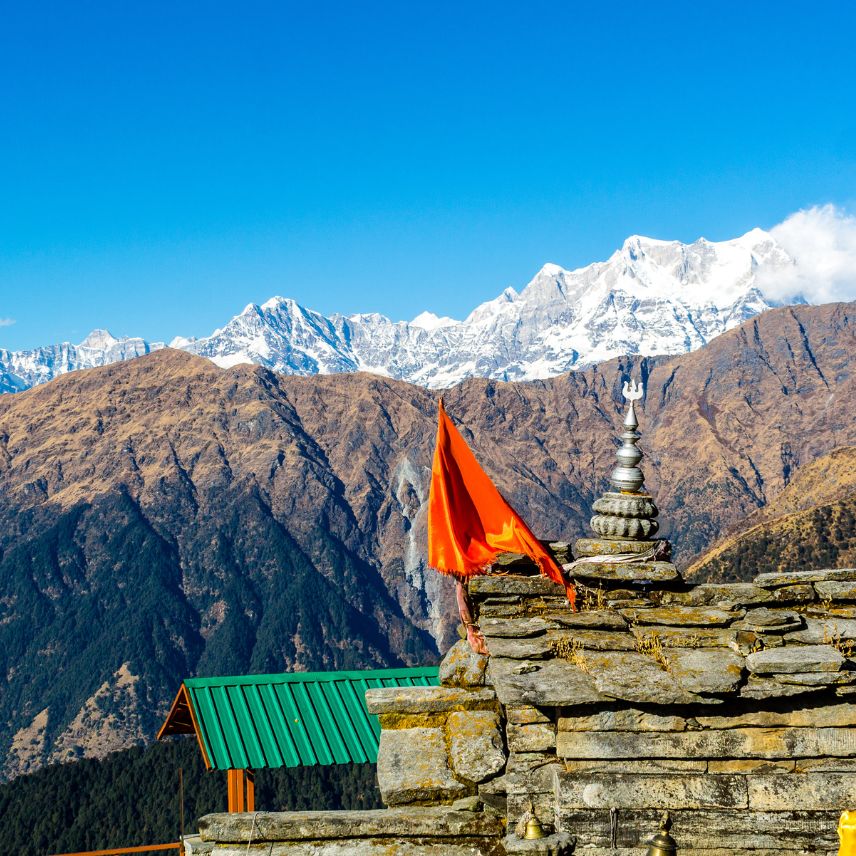Tungnath, a hidden gem nestled in the Indian state of Uttarakhand, is a destination that offers a unique blend of spiritual significance and natural beauty. As the highest Shiva temple in the world, Tungnath is a must-visit for travelers seeking both a divine experience and breathtaking landscapes.
Here’s a guide to what you can do and see in this enchanting locale.
The Spiritual Significance
Tungnath is one of the Panch Kedar, the five sacred temples dedicated to Lord Shiva located in the Garhwal Himalayas. It stands at an altitude of 3,680 meters (12,073 feet) and is renowned for its ancient architecture and spiritual aura. According to legend, the Pandavas of the Mahabharata sought Lord Shiva’s blessings here, and it’s believed that the deity manifested as a bull to escape their pursuit, with his body parts reappearing at different locations, including Tungnath.
The Trek to Tungnath
The journey to Tungnath is as much about the trek as it is about the destination. Starting from the base camp of Chopta, the trek is approximately 3.5 kilometers long and typically takes about 2 to 3 hours to complete. The path winds through dense forests of oak and rhododendron, offering an invigorating walk amid nature’s splendor.
Highlights of the Trek:
- Scenic Views: As you ascend, you’ll be greeted with panoramic views of the surrounding Himalayan peaks, including Nanda Devi, Chaukhamba, and Trishul. The trail is especially mesmerizing during sunrise and sunset.
- Flora and Fauna: Keep an eye out for the diverse flora and fauna. The area is home to various species of birds and animals, and the blooming rhododendrons create a colorful spectacle during the spring season.
- Peace and Serenity: The higher you climb, the more serene the environment becomes. The crisp mountain air and the sound of distant bells from the temple create a tranquil atmosphere that is perfect for introspection.
Exploring Tungnath Temple
Upon reaching Tungnath, you’ll encounter the temple perched majestically against the backdrop of snow-capped peaks. The temple, believed to be more than a thousand years old, is constructed in traditional Garhwali architecture with intricately carved wooden doors and a sacred idol of Lord Shiva.
Things to Note:
- Temple Rituals: Participate in the daily rituals and offerings conducted by the priests. Witnessing the Aarti (ritual of light) can be a deeply moving experience.
- Photography: While photography is allowed, respect the sanctity of the temple and its surroundings. The real beauty lies in soaking in the spiritual ambiance and the stunning natural scenery.
Nearby Attractions
- Chopta: Known as the "Mini Switzerland of Uttarakhand," Chopta serves as the base camp for the Tungnath trek. It offers additional trekking opportunities, such as the trek to Chandrashila Peak, which provides panoramic views of the Himalayan ranges.
- Deoria Tal: A serene lake situated a few kilometers from Chopta, Deoria Tal is perfect for a peaceful retreat and offers a mirror-like reflection of the surrounding peaks.
- Madhyamaheshwar and Kedarnath: If you’re up for more exploration, consider visiting these other temples in the Panch Kedar circuit.
Practical Tips
- Best Time to Visit: The best time to visit Tungnath is from April to June and September to November. The winter months bring heavy snowfall, making the trek challenging and the temple inaccessible.
- Preparation: Ensure you’re physically fit for the trek, as the high altitude can be demanding. Carry warm clothing, comfortable trekking shoes, and essential supplies like water, snacks, and a first-aid kit.
- Accommodation: There are basic guesthouses and dharamshalas (pilgrim rest houses) in Chopta. Make arrangements in advance, especially during the peak trekking season.
Conclusion
Tungnath is more than just a pilgrimage site; it’s a journey into the heart of the Himalayas where spirituality meets natural splendor. Whether you’re trekking through pristine landscapes, connecting with your inner self at the temple, or simply marveling at the majestic views, Tungnath offers an unforgettable experience that resonates long after you leave. So pack your bags, lace up your trekking boots, and set out on an adventure that will stay with you forever.



